Research Use Argument (RUA) Jupyter Notebook
The Research Use Argument (RUA) Jupyter Notebook is an innovative tool designed to streamline and enhance the research process in second language acquisition studies. This powerful notebook guides researchers through a comprehensive, structured approach to formulating and supporting research arguments.
Table of contents
Key Features
1. Interactive Research Question Formulation
The notebook begins by guiding users through the process of crafting a well-structured research question. It prompts for key components such as population, variables, and constructs.
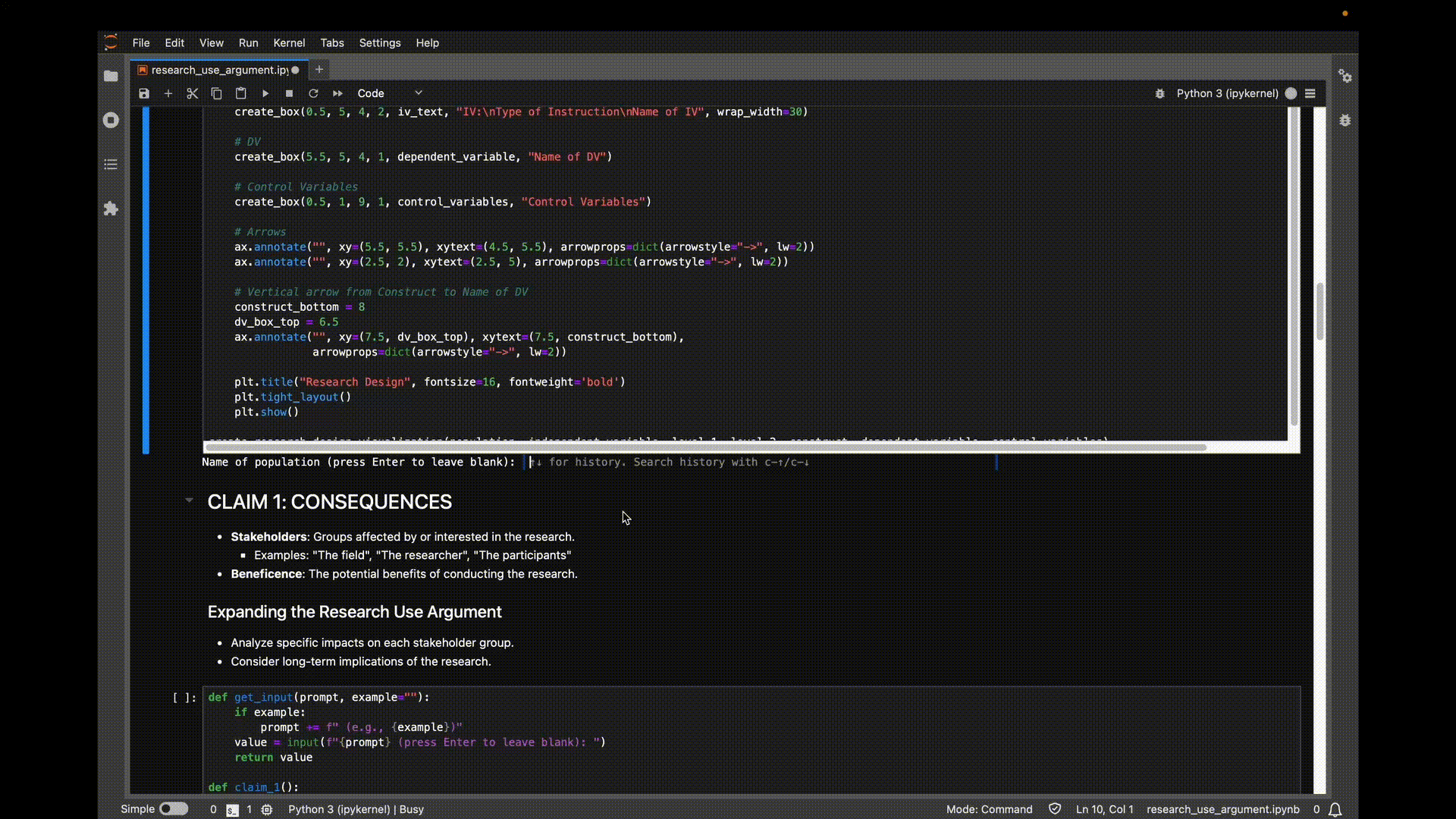
Once all inputs are provided, the notebook generates a visual representation of the research design, helping researchers conceptualize their study.
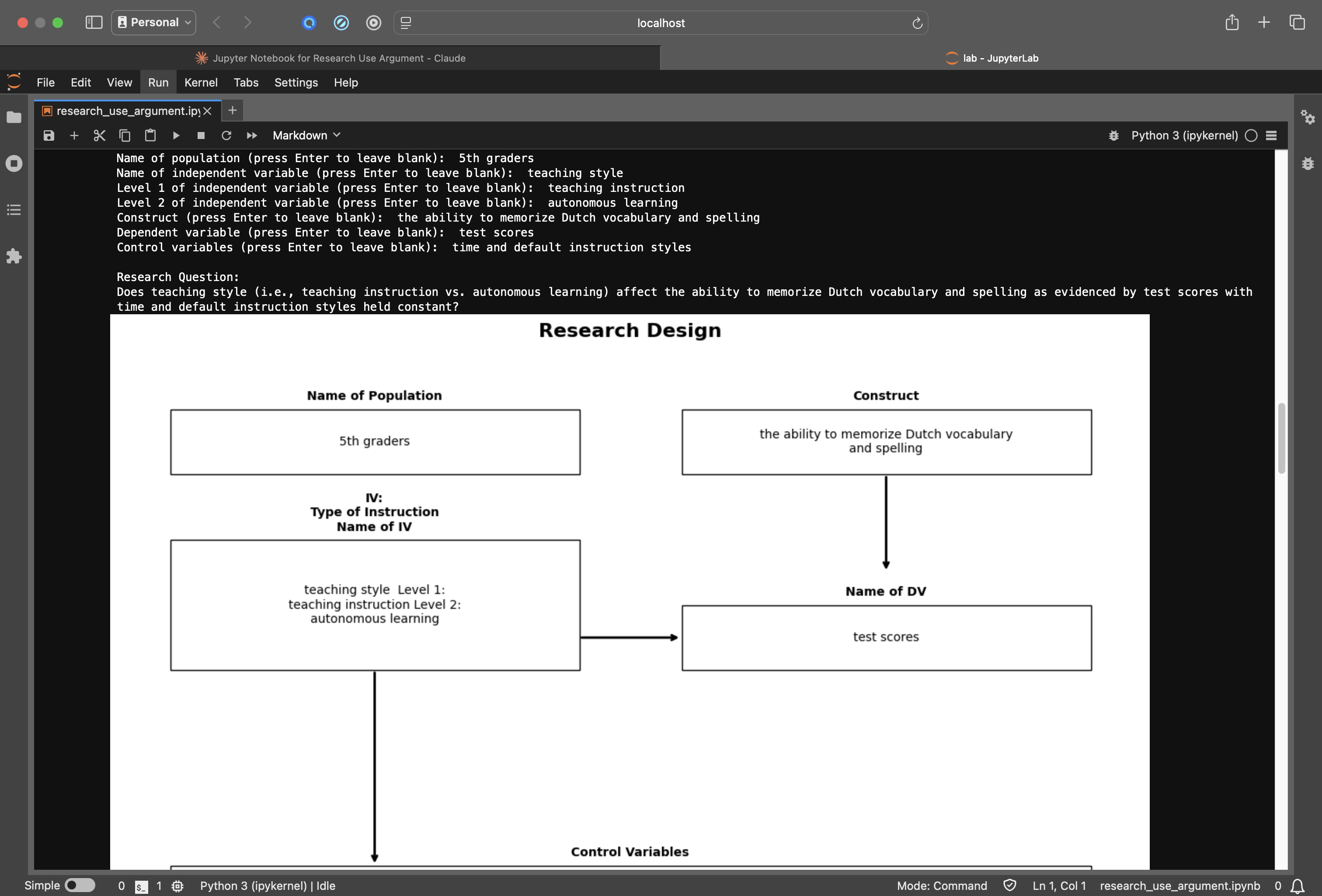
2. Consequences Analysis
The RUA notebook facilitates a thorough analysis of the potential consequences and benefits of the research. It prompts researchers to consider various stakeholders and incorporate relevant literature to support their claims.
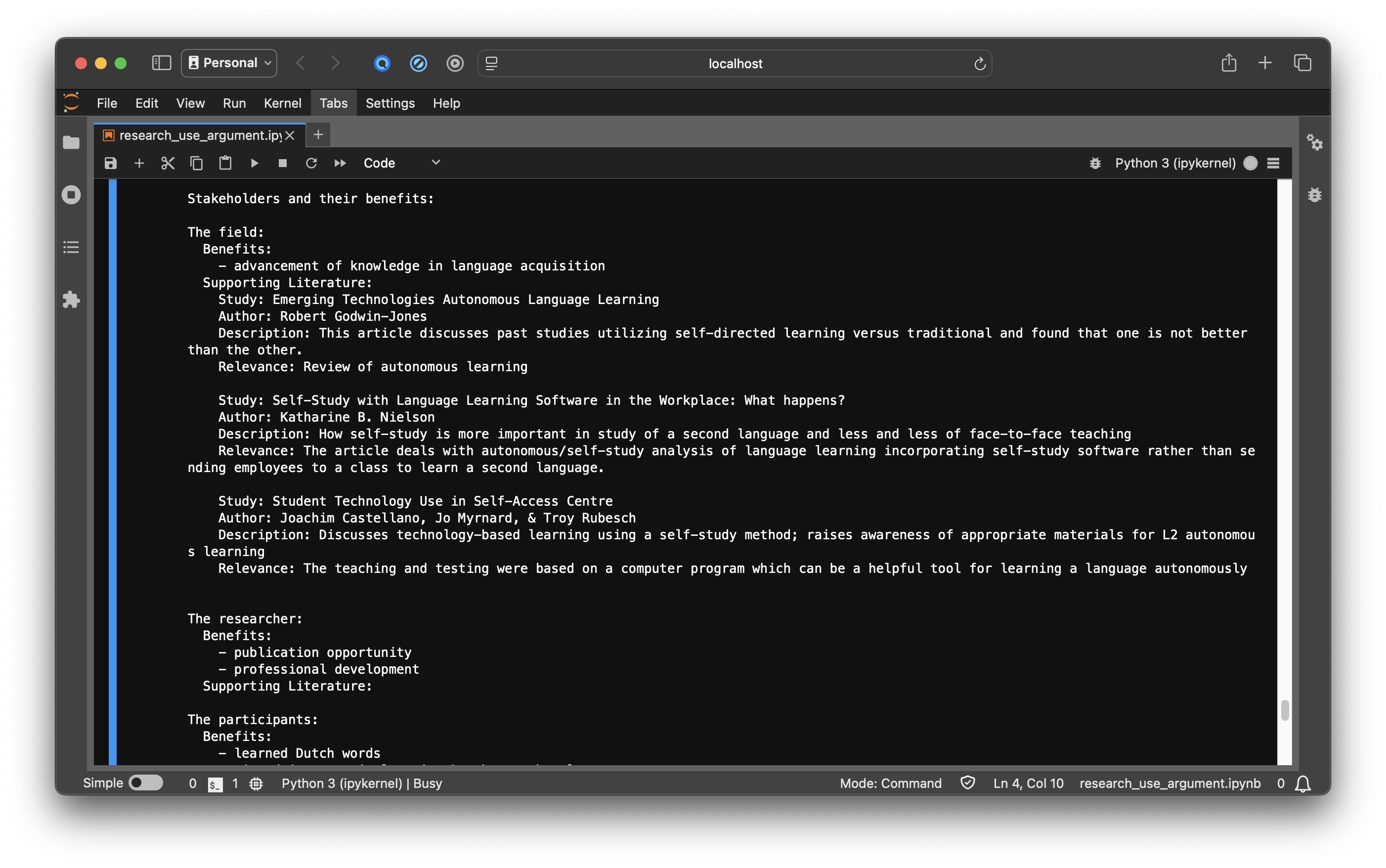
3. Methodology Design
While the specific details of this section are proprietary, the notebook guides researchers through:
- Selecting and justifying a research paradigm
- Operationalizing variables
- Establishing construct validity
- Addressing potential rebuttals to methodological choices
4. Results Analysis
The notebook provides robust tools for analyzing research data, including:
- Importing and processing data
- Performing statistical tests
- Generating visualizations
- Interpreting findings in the context of the research question
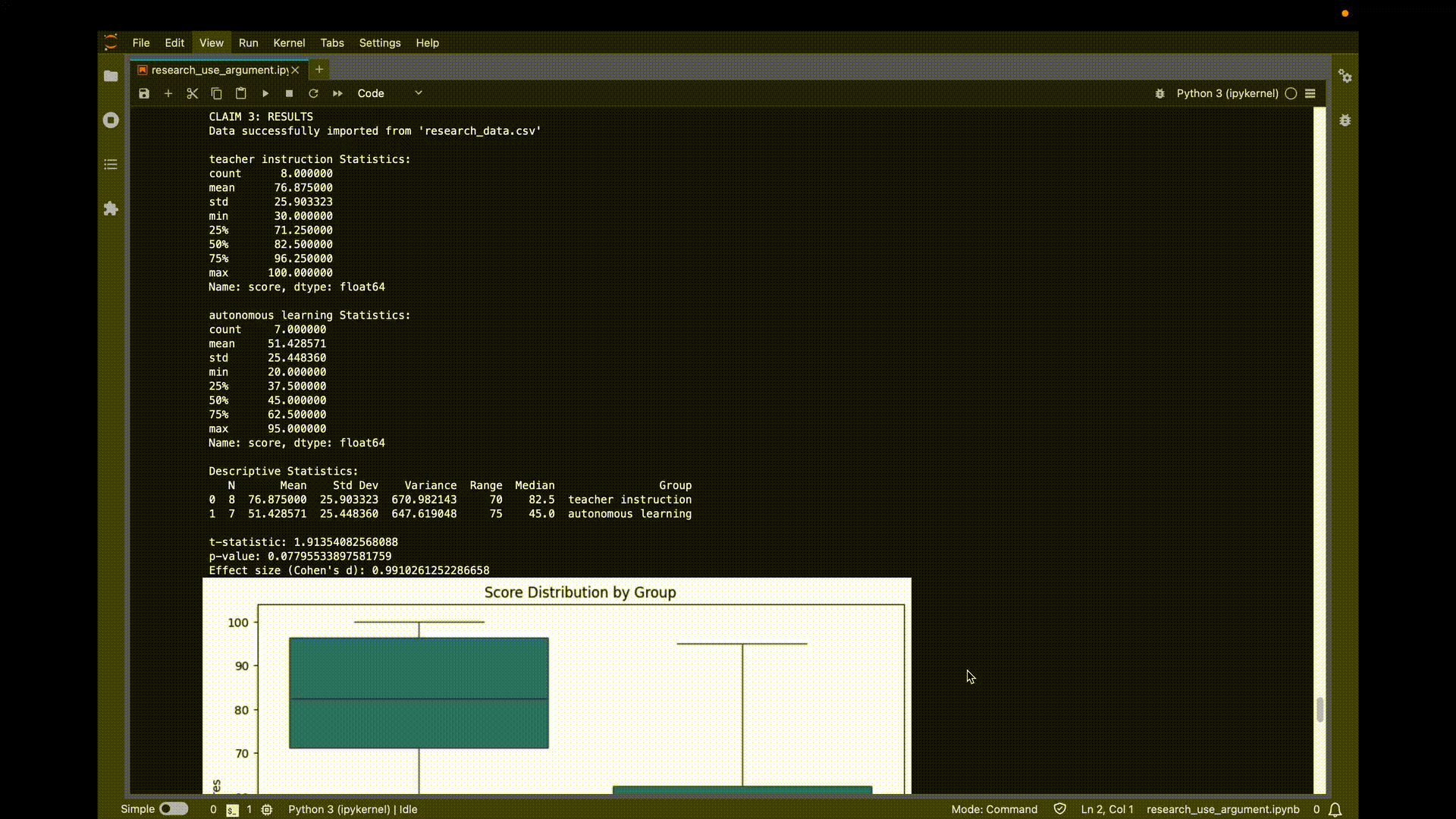
5. Discussion and Implications
In the final section, the notebook assists researchers in summarizing key findings, discussing implications, addressing limitations, and suggesting directions for future research.
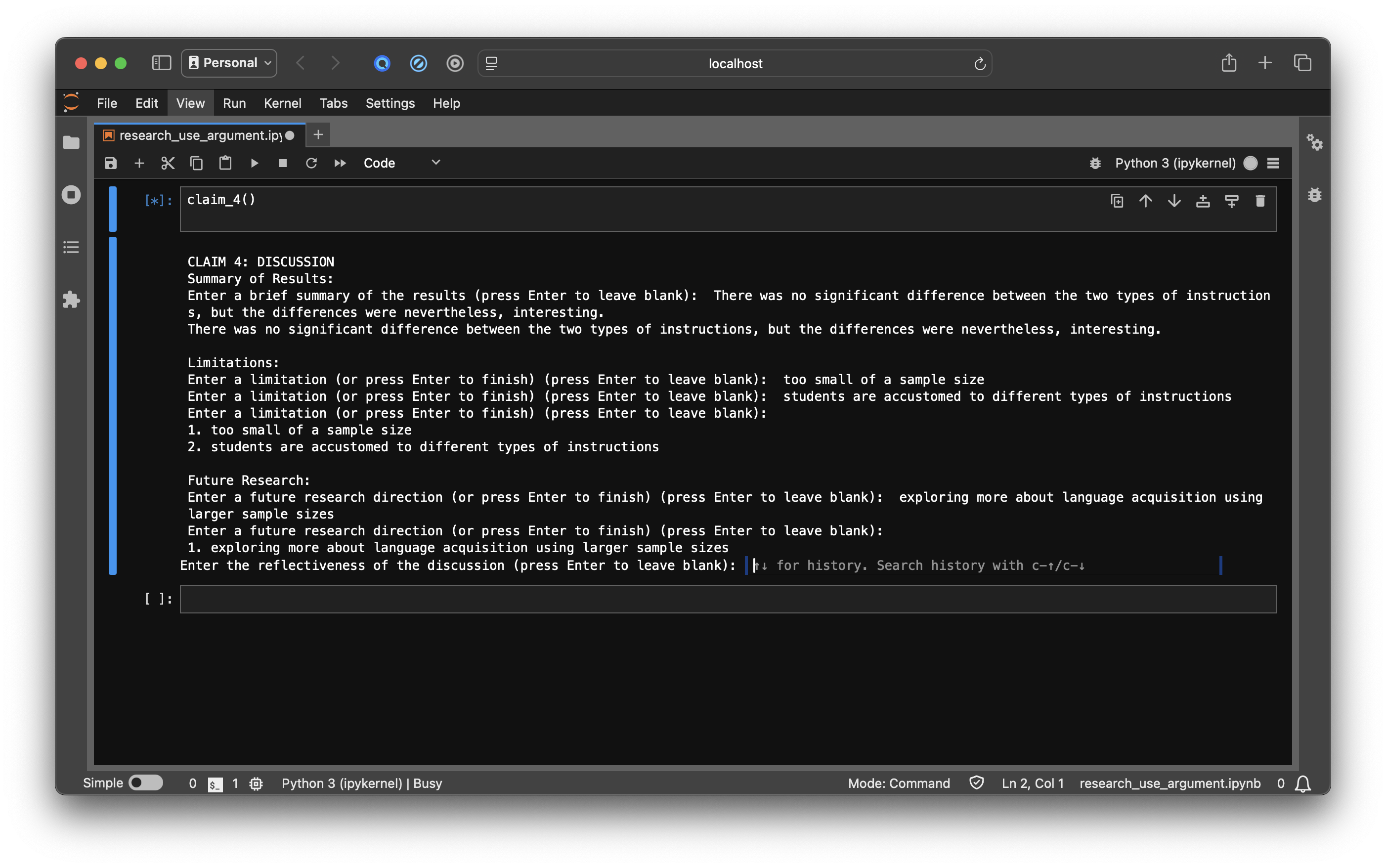
Why It’s Useful
The RUA Jupyter Notebook revolutionizes the approach to second language acquisition research by:
| Feature | Benefit |
|---|---|
| Structured Approach | Guides researchers step-by-step through the research process |
| Comprehensive Analysis | Ensures all aspects of the research argument are considered |
| Data Visualization | Facilitates understanding and presentation of results |
| Methodological Rigor | Promotes thorough literature review and robust methodology |
| Enhanced Quality | Improves overall quality and presentation of research arguments |
While some proprietary features are kept confidential, the RUA Jupyter Notebook represents a significant advancement in research tools for language education.
“The RUA Jupyter Notebook streamlines the research process, promotes thorough analysis, and helps researchers produce high-quality, well-supported arguments in the field of second language acquisition.”
Getting Started
To begin using the RUA Jupyter Notebook:
- Install Jupyter Notebook on your system
- Download the RUA template
- Open the template in Jupyter Notebook
- Follow the guided prompts to build your research argument
# Example of how the RUA notebook might generate a research question
def generate_research_question(population, independent_var, dependent_var):
return f"How does {independent_var} affect {dependent_var} in {population}?"
# Usage
question = generate_research_question("ESL students", "task-based learning", "vocabulary retention")
print(question)